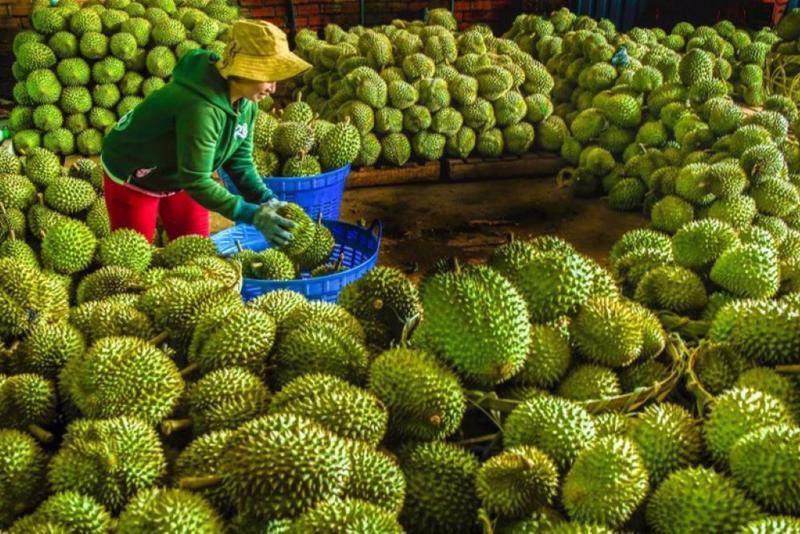According data recently released by the Vietnam Fruit and Vegetable Association, total export value of fruits and vegetables in the first two months of this year is estimated at $677 million, marking a 17 per cent decline compared to the same period in 2024.
Notably, durian, the sector's key export accounting for nearly half of the industry's total value, has experienced a severe drop. By mid-February, durian exports had reached only 3,500 tons, plummeting 80 per cent from the same period last year.
One of the primary reasons for this decline is the tightening of quarantine and food safety regulations in key import markets. China, Vietnam’s largest consumer of durian, has imposed a 100 per cent inspection policy on all durian shipments from Vietnam.
Beyond China, other markets have also intensified technical barriers for Vietnamese durian. Taiwan (China) has extended its requirement for batch-by-batch inspections until April 30, following quality issues detected in several shipments last August. Meanwhile, the European Union has doubled its inspection rate for Vietnamese durian from 10 per cent to 20 per cent due to pesticide residue concerns.
In addition to regulatory hurdles, exports have been further impacted by the prolonged Lunar New Year holiday, during which trade activities were largely suspended. The resulting backlog of shipments has disrupted supply chains and compounded the industry's difficulties.
To restore exports, the Ministry of Agriculture and Rural Development has implemented stricter quality control measures to ensure compliance with plant quarantine standards from import markets. Authorities are also intensifying monitoring efforts, issuing warnings, and enforcing penalties for violations to enhance the reputation of Vietnamese agricultural products.
Additionally, the government is actively negotiating to ease technical barriers and expand market access, aiming to secure long-term sustainable growth for Vietnam’s fruit and vegetable export sector.









 Google translate
Google translate